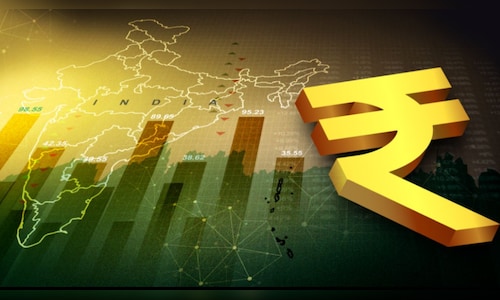
Chachra flagged potential risks from rising US tariffs but noted that the extent of their impact on India remains uncertain.
The rupee is expected to remain range-bound, with the Reserve Bank of India’s interventions helping to manage volatility.
Despite ongoing inflationary pressures, she predicts rate cuts will commence in April 2025, provided inflation shows signs of moderation
This is the verbatim transcript of the interview.
Q: First up your growth forecast for next year that is for FY26 is 6.50%. Does this bake in the likely tremors we may face if there are tariff hikes in the US? How much of it is baked in, or do you see downsides if there is an onslaught of tariffs?
A: Our forecast for fiscal 26 at 6.5% assumes that there will be some increase in tariffs by the incoming US administration, but those would be still country specific. So the assumptions that we have used in our year ahead outlook is that there will be an increase in tariffs for China and also bilaterally for some other major countries, such as Mexico or the EU.
We are not assuming specific tariff hikes for India in these numbers, and also not assuming that there is a case for or an implementation of the universal tariffs, as have been discussed in the past. So those are not picked in our base case, if that comes through, yes, there could be more downside to the 6.5% number.
Read Here | Slackening demand likely weighed on India’s GDP growth in September quarter
Q: Let me also come to the currency and I am making an unfair question, because this should beat your currency strategist. But I was a little intrigued that your currency forecast numbers don’t go above 85, it is 84 for the current year average, 85 for FY26 and then it goes down, the rupee appreciates to 81 in FY27. Can you explain because there is a school like Goldman Sachs tells us that they expect 85.7 also in 2025?
A: So yes, these views are made by currency and FX strategy team, and the they do include fair bit of what they think about how the US dollar would move. In the near term, there would be US dollar strength, but yes, probably will not see that too much in the rupee-dollar moves, or the forecast that we have in our numbers. Primarily with the view that there will be a case for the rupee to get defended, and the volatility to be lower.
So our view is that given that the fundamentals still remain pretty okay for the rupee and the FX reserves, and generally the trend that we have seen in the past of RBI wanting to intervene to reduce volatility, we do think that rupee will be there for more range bound, rather than depreciate at a faster pace. So that is what calls for our view in the near term.
Q: Let me come to the growth forecast. Even for the current year, you are expecting the growth to be 6.7% which means you are not buying the RBI forecast for the second half, they are sitting at something like 7.3-7.4% for the second half, you don’t think that’s happening?
A: Our numbers were earlier 7%, we reduced them to 6.7% in this round of year ahead outlook. But most of the cuts are concentrated in the September quarter so that is the key debate right now. September quarter growth and high frequency data have been showing sort of a broad-based deceleration. So we don’t think that September would be weak. Our numbers are going to be weaker than the 6.7% for September. We are at about 6.3% probably where consensus is also right now.
For second half, we do expect a rebound, but probably not where RBI is looking at bases what they have published as of as yet. Our view is that you see growth picking up in second half, but probably settling more in that 6.7 -6.8% range, rather than higher than that.
Read Here | RBI likely to hold rates in December despite US Fed’s rate cut: Here’s why
Q: Your inflation focus are pretty benign, but for the current year you are still expecting 4.9% that’s a big jump from Reserve Banks, Reserve Bank’s 4.5% is going to get revised because obviously, they were not prepared for the 6% plus in the month of October. But 4.9% would mean that inflation really is not falling off?
A: Yes, I do think that the near-term hump in inflation that RBI has also highlighted we were all expecting. But I think one is that the level is higher than what we were expecting by probably 40-50, basis points, or for both September and October, and then the deceleration as it sets in will therefore just take a little bit longer, given that you have seen us somewhat of an upside surprise, and it’s more mathematical than anything that you will then see numbers being higher.
So when I look at monthly data points, you are probably looking at November print, which would still be close to, say, 5.50%. It will start moderating from December because of the seasonality and the winter month impact on vegetable prices, etc. But as of now, at least what we think the numbers for December, January could still be around the 4.8 to 5% levels, or probably around 4.8% rather than meaningfully lower.
So I think it’s a lot to do with food inflation and food inflation volatility than anything else. I think headline ex-vegetables or core will still be well behaved, but headline, per se, due to the impact of food in the near term, will also probably remain a little elevated than what we were thinking probably two months back.
Q: At one point in time, if I remember right, Chetan was saying that he expecting practically no rate cuts. But now you all are pencilling in some rate cuts next year?
A: Yes, that is right, we did have a view of no rate cuts for pretty much all through this year, we have added rate cuts for next year. So as of now, we expect the first rate cut in April. We do think by then, there will be more evidence of a moderation setting in an inflation. December and February meetings probably with the trailing inflation numbers will be very hard, and that’s why we think the first opportunity would rather be April than before that, just given how inflation numbers are going to be in terms of headline.
For full interview, watch accompanying video
Also Read | Goldman Sachs economist breaks down India’s FY26 GDP forecast and its key drivers



